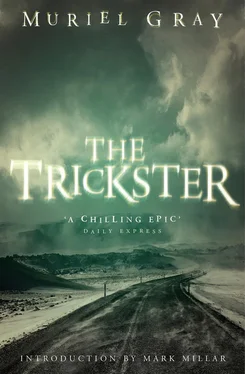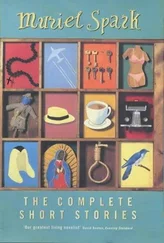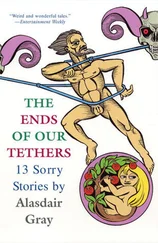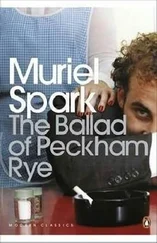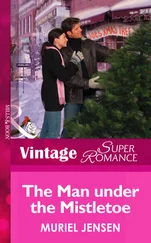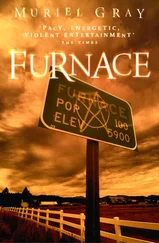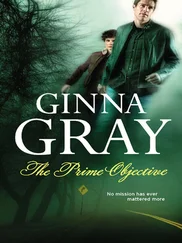The woman smiled gratefully and politely. ‘Sure. That’s fine. We’ve just about covered it all. It’s been very enjoyable, thanks. Hasn’t it, Randall?’
The boy was awestruck by the wolf again. ‘Sure. It’s neat,’ he said absently.
Katie smiled and left them to it. One quick circuit of the railroad display on the balcony to check everybody was out and she could cram in a coffee and a sit-down before locking-up time. The wooden stairs to the balcony creaked in protest as she mounted them, but offered her a view of the whole ground floor as she climbed.
The vantage point told her that the mother and son were the last ones in, and if the boy could tear himself away from the stuffed wolves she should have the place cleared in five minutes. Already she could hear the comforting sound of Margaret cashing up the till on the front desk, counting out the few dollars and cents that the handful of visitors to the Silver Heritage Museum had spent on postcards, pamphlets and bookmarks.
Katie cherished this time – the feeling of the museum having done its job, as though all the exhibits were silently shaking hands, or paws, congratulating themselves for another successful day intriguing, entertaining and educating the visitors. During the winter, this was where the vacationing wives and children who weren’t skiing came to look round, while Dad perfected his parallel turns on the slopes, or the stray family and seasonal worker who passed by and entered on impulse. All left delighted by the display of unpretentious, idiosyncratic mixture of local information that Katie had put together over the past five years. Stuffed animals raged beside solemn Indian artefacts. Posters trying to win the custom of potential Canadian Pacific Railway travellers in the 1900s were framed beside ancient and torturous-looking wooden skis. Fossils, millions of years old, sat happily in cases with blown bird eggs.
The Silver Heritage Museum wasn’t going to win any prizes for academic excellence, but for the entrance fee of a dollar it certainly gave its best shot at being value for money.
This year, Katie had managed to get a grant from the Alberta Tourist Board that would keep things ticking along financially for another two years, an achievement that had spawned a hilarious celebration party for the staff amongst the stuffed animals that made Katie smile every time she thought of it.
If the stern Alberta Tourist Board woman who’d written the letter to her congratulating them had seen her with a glass of cheap wine toasting the museum from the back of a mangy bull moose she might well have changed her mind. She didn’t. Things were doing just fine.
The balcony that ringed the main ground floor space of the museum was a mixture of displays that hadn’t quite been rationalized. Katie had acquired some Victorian glass cases from an auction in Edmonton and these were now filled with an assortment of items that couldn’t be crammed in downstairs. She had wanted the theme to be the building of the railroad in the late 1800s, and Silver’s important part in it. However, lack of space had made them include the history of the Kinchuinick Indians from the area; how they broke away in the eighteenth century from the larger Assiniboine and Stony tribes to live here in the mountains. And although the native Canadians had no part in the building of the railroad, Katie dug up a tenuous historical tie-in about how tribe members had apparently hindered the largely Scottish railroad work-gang during the final stages of building the Great Corkscrew Tunnel. The tunnel was the engineering feat of the century, that saw CPR blast that mad doubling-back tunnel two miles long right through the centre of Wolf Mountain.
In fact the centrepiece of the balcony display was a working model of the tunnel; a papier-mâché masterpiece they had commissioned from Calgary, where a tiny model train wound its way through the half cut-away mountain when you pressed a red button on the side of the case. The kids loved it. They would stand for an age pressing and re-pressing the button, making the train spiral its way round the tunnel until a bored parent dragged them downstairs to the bird display.
With the mountain cut in half you could see exactly where the line went, a luxury not available in real life. The papier-mâché world was much easier to understand.
Katie knew the whole floor should have been railroad history, but she had all these great Indian domestic tools, and artefacts to do with tribal worship and mythology to show and nowhere to show them. So she banged them in the cases and hoped for the best. Sam, of course, called the Indian stuff junk. She had watched his face as he walked round the display for the first time with her and the clouds of emotion that blackened his normally smooth brow were hard to fathom.
This contempt for his Indian past was something Katie had struggled to understand all their married life. Since it was virtually a taboo subject in the Hunt household she didn’t reckon she would ever be permitted to cross that bridge into the secret place that fed Sam with his self-loathing. Nevertheless, she grieved for him when she saw it manifest itself.
Often she would look at the two unmistakably Indian faces of her children Billy and Jess and mourn that they would never enjoy the rich part of their heritage provided by their father’s blood. But Sam could barely say Indian or Kinchuinick without spitting the words and she loved him too deeply to provoke the wrath he so readily turned on himself. If he thought the valuable Indian artefacts were junk, they would just have to agree to disagree. She made sure that all her Kinchuinick studies were done at the museum, keeping the facts to herself and her burning interest in the past of her husband’s race a jealously-guarded secret.
The beautiful carved bone amulet Sam wore round his neck, a very ancient Assiniboine charm, gave Katie her only tiny glimmer of hope that one day he would face up to his roots. She knew it had been his father’s, the male half of the dead parents Sam never spoke of, and the nature of her job told her it was valuable beyond its role of sentimental keepsake. But he offered her no explanation, no anecdotal family history, and he took it off only once, when he was forced to replace its leather thong after snapping it while swimming in the creek.
What kept her from prying too deeply were two things. First, she thought the ivory-coloured circle of bone hanging on the tight brown skin of his hairless chest was the sexiest thing she had ever seen; and secondly, she loved him so much that anything that made hurt flit across his broad innocent face made her die inside. So the history of Sam’s amulet was safe. Sam would never know she had located its origin in more than one book. She knew lots about that charm. One day she would talk to him about it, but not now.
Katie walked clockwise round the cases, completing her little ritual. She wandered past the display of beaded cradle-boards, noting that the model baby, strapped into the most ornate example was starting to go yellow on one side of its face. Dummies were a pain. They never looked real, and when they did there was something frightening about them. This mangled thing wasn’t going to fool anyone, but Katie had insisted on the baby, just to educate the public about the human side of her objects. It wasn’t enough to show visitors the old crumbling piece of wood and beading and make them admire the handiwork. You had to make them stop and think. Think about what life was like. Think about how their life was much the same as our life. Even make twentieth-century Mr and Mrs Leisure Suit consider that although things were harder for the average eighteenth- and nineteenth-century Kinchuinick Indian, in some ways it was better then than now. She looked at the flaky yellowing face of the plaster baby. The real thing would have been strapped into one of these cradleboards from the moment it was born and taken out occasionally to stretch and kick and be cuddled, then strapped back in and attached to its mother. Secure. Loved. Cherished. Forest moss for a diaper, with the plant’s chemicals providing a natural barrier to diaper rash and a whole tribe providing love, attention and security. Pretty different from the Kinchuinick babies now. Nothing about their modern lives would sit happily in a mahogany case. The plaster baby looked back at her as if it mourned for them too. Needs a clean, she thought. Get rid of that yellowing with some turpentine. It went on her mental list.
Читать дальше
